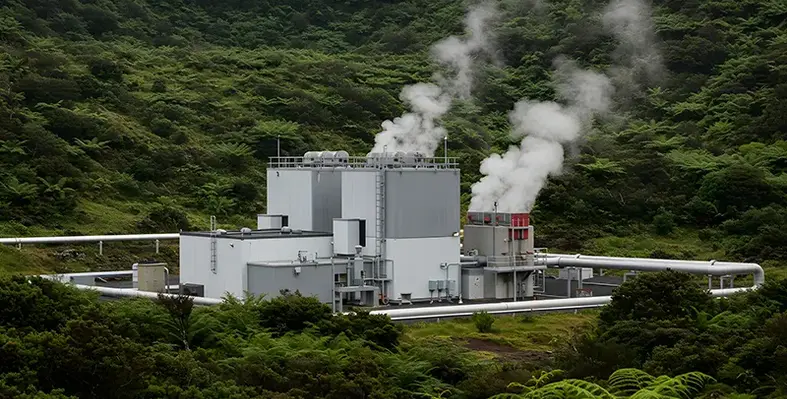 The global geothermal energy market is projected to grow from USD$9.81 billion in 2024 to USD$13.56 billion by 2030, registering a compound annual growth rate (CAGR) of 5.3% over the forecast period.
The global geothermal energy market is projected to grow from USD$9.81 billion in 2024 to USD$13.56 billion by 2030, registering a compound annual growth rate (CAGR) of 5.3% over the forecast period.
The growing use of geothermal energy in power generation, favourable government policies, and the rising demand for ground source heat pumps-especially in response to increasing heating costs-are the major factors propelling this growth.
The market has been segmented by technology into binary cycle plants, flash steam plants, dry steam plants, ground source heat pumps, direct systems, and others. Among these, binary cycle plants are currently dominating. These systems are particularly well-suited for medium-temperature geothermal reservoirs ranging from 100°C to 170°C, and have gained popularity due to their ability to function effectively with lower-temperature water sources. They are also more environmentally friendly, as they emit virtually nothing other than steam.
In terms of temperature, the geothermal energy market is divided into low, medium, and high temperature segments. The low-temperature segment is expected to hold the largest market share in 2024. This is largely due to advancements in binary cycle technology, which have made it possible to tap into low-temperature geothermal reservoirs. This has opened up access to geothermal energy in many regions where high-temperature resources were not available, expanding the potential for growth in the market.
Regionally, Asia Pacific stands out as the largest and fastest-growing geothermal energy market. Countries in the region are increasingly relying on geothermal energy to meet rising electricity demand and achieve net-zero CO₂ emissions. The region is seeing major public and private sector investments aimed at developing geothermal infrastructure.
Indonesia and New Zealand are particularly rich in geothermal resources and are leveraging them as dependable, low-emission energy sources. China, currently the world’s largest user of geothermal heat pumps, primarily uses geothermal for district heating and space heating. Over the past decade, Indonesia has also brought several geothermal power plants online, significantly improving its domestic energy capacity.
Leading companies in the market include Ormat (US), Mitsubishi Heavy Industries (Japan), and SLB (US), all of which are playing key roles in the development and deployment of geothermal technologies globally.
With technological innovations and supportive policies in place, geothermal energy is positioned to play an increasingly vital role in the global shift towards sustainable and reliable energy sources.
